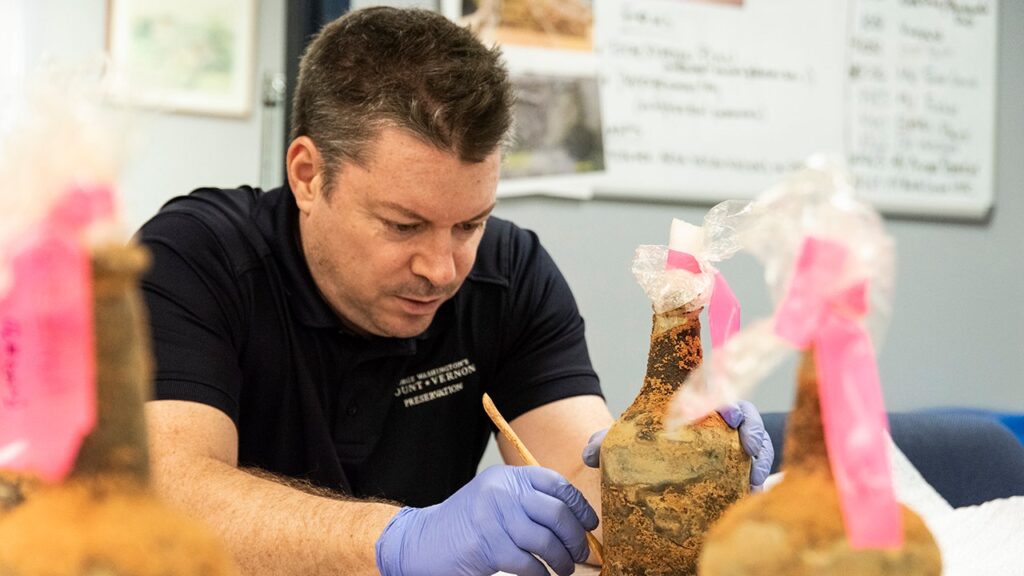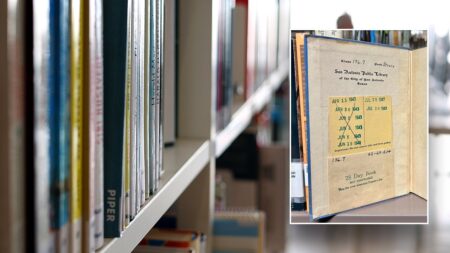Archaeologists at George Washington’s Mount Vernon have made an extraordinary discovery in the cellar of the historic Northern Virginia home. Dozens of glass jars filled with fruit preserves, dating back to before the American Revolution, have been uncovered. Out of the 35 bottles found, 29 remain intact, holding cherries, gooseberries, or currants. Mount Vernon President & CEO, Doug Bradburn, expressed his excitement over the discovery, calling it “unprecedented” and a “blockbuster discovery.” The artifacts are set to provide insights into the origins of the United States as the country approaches its 250th anniversary in 2026.
The recent find follows the discovery of two fully intact 18th-century bottles two months ago, containing a mysterious liquid along with cherries and pits. Experts believe that the bottles were originally filled with cherries and buried between 1758 and 1776 for refrigeration purposes. The perfectly preserved condition of the bottles has amazed archaeologists, as such food remnants from the 18th century are rarely found intact. The preservation of cherries in glass bottles buried underground was a common practice to keep them fresh in the Virginia heat.
The newly-discovered bottles have been carefully extracted from the storage pits in the cellar and are now undergoing scientific analysis at Mount Vernon’s archaeology lab. So far, 54 cherry pits and 23 stems have been identified, indicating that the bottles were likely filled with cherries when buried. The artifacts will soon be sent off-site for conservation to ensure their preservation for future study. The discovery comes as Mount Vernon undergoes a $40 million Mansion Revitalization Project, funded privately.
According to Mount Vernon’s principal archaeologist, Jason Boroughs, the bottles have likely not been exposed to light since before the American Revolution. They may have been forgotten when George Washington left the home to lead the Continental Army during the Revolution. As such, the fragile nature of the bottles requires meticulous care and handling. The Mount Vernon Ladies’ Association, America’s first historic preservation organization, is well-equipped to manage and preserve this remarkable find.
In the 18th century, burying preserves underground was a common method of storage in the Virginia heat. It was found that sometime between 1758 and 1776, a pit was dug in the cellar, bottles were placed inside, and the pit was filled with dense clay to preserve the contents. The discovery of these perfectly preserved fruits offers a rare insight into 18th-century food practices, plantation foodways, and the origins of American cuisine. It also highlights the knowledge and skills of the enslaved individuals, such as Doll, who managed food preparations at Mount Vernon.
George Washington, who resided at Mount Vernon along the Potomac River with his wife after their marriage in 1759, passed away at the home in 1799. He served as the first President of the United States from 1789 to 1797 and is buried on the grounds of Mount Vernon. The recent archaeological discoveries at the historic site continue to shed light on the past and contribute to a deeper understanding of life in the 18th-century America.












